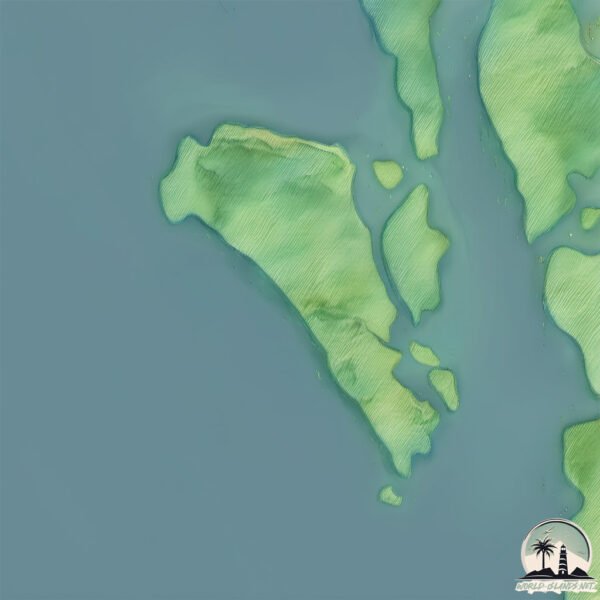Welcome to Ko Pu , a Tropical island in the Malacca Strait, part of the majestic Pacific Ocean. This guide offers a comprehensive overview of what makes Ko Pu unique – from its geography and climate to its population, infrastructure, and beyond. Dive into the details:
Geography and size of Ko Pu
Size: 19.6 km²Coastline: 30.2 kmOcean: Pacific OceanSea: Malacca StraitContinent: Asia
Ko Pu is a Medium Island spanning 20 km² with a coastline of 30 km.
Archipel: –
Tectonic Plate: Sunda – Extends across Southeast Asia, encompassing parts of the Sunda Shelf, known for its interaction with the Australian Plate, contributing to volcanic activity in Indonesia.
The geographic heart of the island is pinpointed at these coordinates:
Climate and weather of Ko Pu
Climate Zone: TropicalClimate Details: Tropical Monsoon ClimateTemperature: Hot
Climate Characteristics: Characterized by heavy rainfall, high humidity, and uniformly high temperatures, but with a distinct short dry season. It features a seasonal reversal of prevailing wind directions.
Topography and nature of Ko Pu
Timezone: UTC+07:00Timezone places: Asia/JakartaMax. Elevation: 217 m Mean Elevation: 41 mVegetation: Evergreen Broadleaf ForestTree Coverage: 70%
The mean elevation is 41 m. The highest elevation on the island reaches approximately 217 meters above sea level. The island is characterized by Hills: Gently sloping landforms with rounded tops, having a maximum elevation between 200 and 500 meters. Hills contribute to a varied landscape on islands.
Dominating Vegetation: Evergreen Broadleaf Forest
Vegetation: 8 vegetation zones – Very Highly Diverse Island
Infrastructure and Travelling to Ko Pu
Does the island have a public airport? no .
Does the island have a major port? no .
The mean population of Ko Pu is 117 per km². Ko Pu is Moderately Inhabited. The island belongs to Thailand .
Continuing your journey, Ko Hang is the next notable island, situated merely km away.
KOH JUM, THAILAND | All you need to know. Secluded Beaches, Top Restaurants, Amazing Villa!
Our search for off the beaten track Thai Islands took us to Koh Jum. Also known as Koh Pu. Located on the West Coast of Thailand ...
KOH JUM, THAILAND | All you need to know. Secluded Beaches, Top Restaurants, Amazing Villa!
Our search for off the beaten track Thai Islands took us to Koh Jum. ...
Our search for off the beaten track Thai Islands took us to Koh Jum. Also known as Koh Pu. Located on the West Coast of Thailand ...
Thailand's BEST Island you've never heard of, Koh Jum. #thailand #thailandtravel #island #travel
Koh Jum (Koh Pu) is our favorite island in Thailand for many reasons - ...
Koh Jum (Koh Pu) is our favorite island in Thailand for many reasons - it has far fewer tourists, therefore it is less developed, ...
Koh Jum is a hidden paradise island!
We had about one week in Koh Jum after our stay in Ao Nang, Krabi and ...
We had about one week in Koh Jum after our stay in Ao Nang, Krabi and we absolutely loved this island! Youtube ...
Thailand is classified as Emerging region: G20: Group of Twenty – Major economies comprising both developed and emerging countries, representing the world’s largest economies. The level of income is Upper middle income.
News – Latest Updates and Headlines from Ko Pu
Stay informed with the most recent news and important headlines from Ko Pu. Here’s a roundup of the latest developments.
Loading...
Please note: The data used here has been primarily extracted from satellite readings. Deviations from exact values may occur, particularly regarding the height of elevations and population density. Land area and coastline measurements refer to average values at mean high tide.

